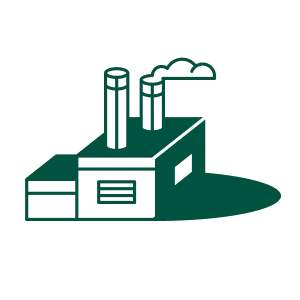Economy articles

What is the current inflation rate in the US?
About 3%, as of September 2025. Inflation refers to the rise in prices of goods and services over time, which reduces the purchasing power of the dollar. The inflation rate is the percentage that describes how quickly these prices are rising. While several government datasets track price changes, the Consumer Price Index (CPI) represents about 90% of the US population. The CPI measures inflation by tracking the price fluctuations of a “basket of goods and services” over time, providing a clear picture of how inflation affects everyday living expenses.

What is the unemployment rate in the US right now?
About 4.4% in September 2025. That's a 0.3 percentage point increase from a year before. The unemployment rate is the percentage of people in the labor force who are actively looking for work but not currently employed. It's a common way to measure the health of the job market and economy.

How active has the 2025 hurricane season been?
Seven tropical storms and five hurricanes so far in 2025. In the Atlantic Ocean, tropical storms and hurricanes are the most dangerous designations of storms that are collectively known as tropical cyclones. The average number of such storms per year for the prior decade (2015 to 2024) was 18. That’s the highest 10-year average on record, based on National Oceanic and Atmospheric Administration (NOAA) data dating back to 1851.

How has inflation affected your dollar?
Inflation, simply put, is the rise in prices over time. As a result, each dollar buys less than it did before. Use this inflation calculator below to track the value of the dollar. See how a dollar has changed in worth during your lifetime, or even as far back as 1913, when the data begins. Or reverse the numbers and track what the cost of an item today was worth in the past.

How much are doctors paid?
How much do you think the average doctor earns per year? We asked our newsletter readers, and the plurality guessed $200,050.In reality, the average doctor earned $350,000 in individual total income in 2017 —about 1.75 times what most people guessed. (All figures in this article come from IRS data analyzed by five economists.) In fact, the top 1% of physicians in the United States earned an average of $4 million per year, with much of that income coming from business ownership and capital gains.What states pay doctors the most?The average income of a doctor may be surprising; so might be the map of doctor earnings. Before we get to the full map of doctor incomes nationwide, let’s take a brief detour on wealth in the United States.Wealth in America tends to cluster on the coasts. Some of the richest states in median household income are Massachusetts, New Jersey, Washington state, and California. And for many professions, average incomes by state look a lot like average wealth of the state. Take lawyers. In 2017, the best-paid lawyers tended to live in New York, Connecticut, and California — some of the highest-income states in the US. The lowest-paid lawyers tended to live in West Virginia, Kentucky, and New Mexico — some of the poorest states in America (by median household income).

What is the Consumer Price Index, and what does it mean for the economy?
Rising inflation can have a direct impact on the lives of Americans. It means increases in prices at grocery stores, gas stations, and retail shops, making it harder to afford their daily necessities, particularly if wage increases don’t keep up.Inflation is a phenomenon that can be reported using various measures, the most common of which is the rate of change in a measure called the Consumer Price Index (CPI).What does the CPI measure?The CPI, produced by the Bureau of Labor Statistics (BLS), measures changes in the prices paid by urban consumers (who are over 90% of the population) for a particular group of goods and services. The CPI looks specifically at the prices of apparel, education and communications, food and beverages, housing, medical care, recreation, transportation and other items in over 200 categories.What is the difference between CPI and inflation?The CPI is reported monthly alongside the “inflation rate,” which, though reported monthly, is a measure of percentage change in the CPI in the last year.

What is a recession?
People feel anxious about the economy for a range of reasons, including times when their wages aren’t rising or their costs are increasing. And then there’s the r-word: recession. Some people use informal measures to say the economy is in a recession: when gross domestic product (GDP), or the economy’s output, declines for two fiscal quarters in a row. But while these things tend to go hand in hand, that’s not an official designation.What is a recession?There is only one official way to call a recession. That’s up to a committee at the National Bureau of Economic Research (NBER), a private, nonprofit research organization. The committee considers a wide range of economy-wide, monthly data points, but the NBER views GDP as “the single best measure.” The committee calls a recession once there is a significant decline across these measures for more than a few months. The NBER’s official designation of a recession, then, doesn’t happen until there is several months of data, allowing it to be sure both that a recession happened and when exactly it started. In other words, the NBER looks backward, not at the present moment.What have recessions looked like in the past?The US has gone through 34 recessions since 1855. Thirteen of them happened after World War II.

How much revenue does the federal government collect from tariffs?
$77.0 billion in FY 2024. This figure reflects revenue from tariffs and other import-related fees, also known as customs duties. Customs duties are taxes and fees paid by US importers and collected by US Customs and Border Protection on goods imported into the country, which generate revenue for the federal government.

What does the Department of Labor (DOL) do?
The Department of Labor (DOL) is an executive branch agency responsible for overseeing the American labor force and working conditions. Its functions include enforcing wage and hour standards and union law, regulating workplace safety, administering unemployment benefits and workers’ compensation, collecting labor market data, and promoting workforce development. It was established in 1913.

What does the Department of the Treasury (TREAS) do?
The Department of the Treasury (Department of Treasury, TREAS) is a cabinet-level executive branch agency responsible for overseeing economic conditions and ensuring the financial security of the United States. The department's functions include advising the president on economic matters, managing federal finances, collecting taxes through the Internal Revenue Service, producing currency, and supervising national banks. It was established in 1789 and is the second-oldest department in the federal government.

What does the Equal Employment Opportunity Commission (EEOC) do?
The Equal Employment Opportunity Commission (EEOC) is an independent executive branch agency tasked with enforcing workplace discrimination laws. Its functions include investigating charges of discrimination against employers, providing guidance and oversight on equal employment practices, and conducting outreach and education programs. Most companies with 15 or more employees are under EEOC jurisdiction. The agency was established by the Civil Rights Act of 1964.

What does the Office of Personnel Management (OPM) do?
The Office of Personnel Management (OPM) is an independent executive branch agency responsible for managing the civil service of the federal government. Its functions include coordinating the recruitment of new government employees, managing health insurance and retirement benefits programs, and providing resources for job seekers. Established in 1979, it serves as the chief human resources agency and personnel policy manager for the federal government.

What does the National Labor Relations Board (NLRB) do?
The National Labor Relations Board (NLRB) is an independent executive branch agency responsible for safeguarding employees’ rights to unionize and preventing unfair labor practices. Its functions include conducting union elections, investigating charges of unfair practices, deciding cases, and enforcing punishment. It was established in 1935.

What does the Department of Transportation (DOT) do?
The Department of Transportation (USDOT, DOT) is a cabinet-level executive branch agency responsible for overseeing national transportation systems and infrastructure. Its functions include developing and implementing federal transportation policies; ensuring the safety and efficiency of highways, railroads, air travel, and maritime transport; and administering funding for transportation projects including local transit systems. It was established in 1966.

What does the Small Business Administration (SBA) do?
The Small Business Administration (SBA) is an independent executive agency responsible for supporting small business owners and entrepreneurs in their business ventures. Its functions include providing small businesses access to capital, offering free or low-cost counseling and training, working with other government agencies to contract small businesses, and advocating on behalf of the small business sector in front of Congress. It was established in 1953.

What does the Bureau of Economic Analysis (BEA) do?
The Bureau of Economic Analysis (BEA) is a subdivision of the US Department of Commerce responsible for providing important economic statistics including the gross domestic product (GDP) of the United States. The agency collects and analyzes data on economic performance, trade, and industry, which helps inform public policy and business decisions. It was established in 1972.

What does the Department of Energy (DOE) do?
The Department of Energy (DOE) is an executive branch agency responsible for overseeing national energy policy and managing the country’s nuclear infrastructure. Its functions include advancing energy research and innovation, promoting energy efficiency and renewable energy, regulating the production and distribution of electricity and fossil fuels, and ensuring the security of the US nuclear weapons stockpile. It was established in 1977.

What does the Department of Commerce (DOC) do?
The Department of Commerce (DOC) is an executive branch agency responsible for supporting economic growth within the US. Its functions include promoting job creation, sustainable business development, and ensuring economic competitiveness. It was established in 1903.
What does the Department of Housing and Urban Development (HUD) do?
The Department of Housing and Urban Development (HUD) is an executive branch agency responsible for national housing policy and community development. Its functions include providing affordable housing assistance, enforcing fair housing laws, supporting homeownership programs, and administering grants for urban development and disaster recovery. It was established in 1965.

What does the Office of the US Trade Representative (USTR) do?
The Office of The United States Trade Representative (USTR) is a subdivision of the Executive Office of the President responsible for developing and coordinating US international trade, commodity, and direct investment policy, and overseeing negotiations with other countries. The agency works to create trade opportunities for American businesses and workers, enforce US trade laws, and ensure that trade agreements are fair and beneficial to the US economy. It was established in 1963.